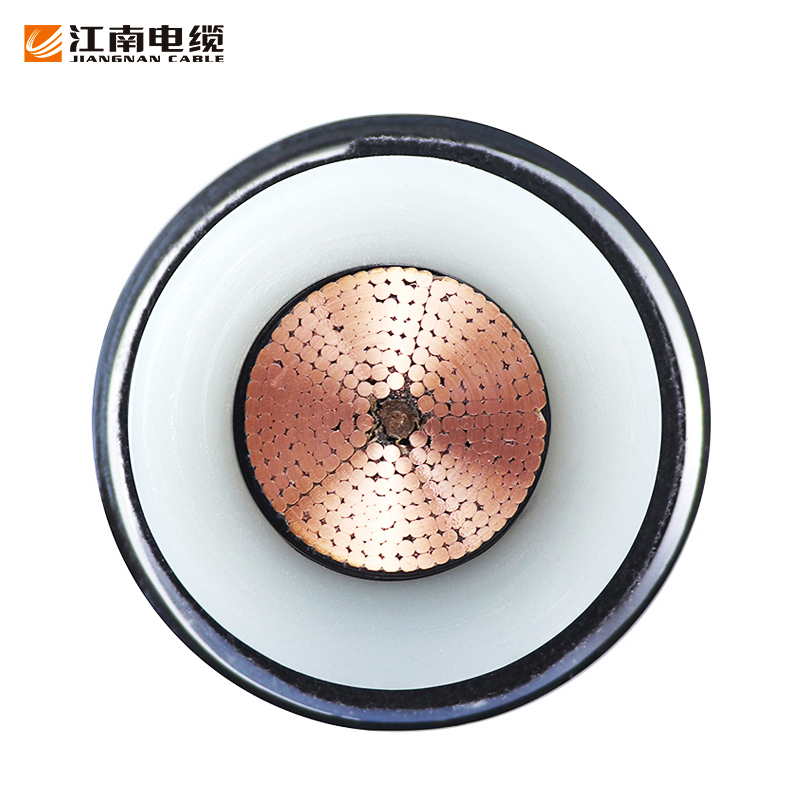Unveiling Soil Thermal Behavior Under Ultra-High Voltage Power Cable Operations
Electricity is an essential part of our daily life. It powers homes, industries, and cities also. To move this electricity over long distance the power cables are used. Some of these cables carry extremely high voltages known as Ultra-High Voltage (UHV) Power Cables. These cables are often buried underground to protect them and save space. But did you know that these cables also affect the soil around them?
When electricity travels through these cables then heat is produced. This heat moves into the surrounding soil. Soil thermal behaviour describes how the soil responds to this heat. It is important to consider it because poor soil heat tolerance can cause many problems such as overheating the cables, causing damage to them, or shortening their lifespan. We'll look at how soil responds to the heat from UHV power cables in this article.
Why Does Soil Heating Matter?
UHV cables carry a lot of electric current. As electricity moves through them, they get hot. This is a normal process. However, if the cables get too hot, their performance decreases, and the extreme heat can also damage the cable's insulation, which results in power outages or even serious electrical failures.
Since these cables are often buried, the soil acts as a cooling system. The heat from the cables spreads into the soil. If the soil can carry away the heat quickly, the cables stay cool. But if the soil traps the heat, the temperature around the cable keeps rising. This can lead to dangerous conditions. This is why engineers need to study how different types of soil react when exposed to the heat from UHV power cables.
![Unveiling Soil Thermal Behavior Under Ultra-High Voltage Power Cable Operations 1]()
Factors That Affect Soil Thermal Behavior
Soil is not the same everywhere. Different types of soil react to heat in different ways. Several factors show how soil deals with heat from UHV cables:
1. Soil Type
Clay, sand, gravel, and loam have different thermal properties. For example, sandy soils allow heat to pass through quickly, while clay soils hold heat longer.
2. Moisture Content
Water in the soil helps carry heat away. Wet soils can absorb and spread heat better than dry soils. However, if the soil dries out over time, its ability to cool the cables decreases.
3. Soil Density
Compact soil can conduct heat better than loose soil. The arrangement of soil particles plays a big role in how heat moves.
4. Ambient Temperature
The temperature of the surrounding environment also affects the soil's cooling ability. In hot climates, soil is already warm, making it harder to absorb extra heat from cables.
5. Thermal Resistivity
This is a measure of how well soil resists the flow of heat. Lower thermal resistivity means the soil conducts heat better, which is good for cable cooling.
How Do Engineers Study Soil Thermal Behavior?
To keep UHV cables safe, engineers need to understand how heat moves through soil. They use both laboratory tests and computer simulations.
Laboratory Tests
In labs, small samples of soil are tested under controlled conditions. Scientists measure how much heat the soil can absorb and how fast it can spread that heat. They also test soils at different moisture levels and densities to see how these factors change their thermal behavior.
Field Tests
Engineers also perform tests at actual sites where cables will be installed. They bury test cables and monitor how the soil temperature changes over time. These real-world tests are important because lab tests can’t always mimic real conditions like weather and underground water levels.
Computer Simulations
Modern engineering uses software to simulate soil behavior. These simulations can predict how the soil will react under different loads, temperatures, and environmental conditions. This helps engineers plan better cable installations without always needing costly field tests.
Managing Soil Heating Problems:
Once engineers know how soil behaves, they can take steps to prevent overheating:
- Choose Better Soil: In some projects, the soil around cables is replaced with a type that has better thermal conductivity.
- Use Thermal Backfill Materials: Special backfill materials can be added around the cable to improve heat dissipation.
- Control Moisture: Keeping the soil moist around the cables helps in better heat absorption.
- Proper Cable Depth: Cables buried at the right depth can benefit from the cooler layers of soil below the surface.
Conclusion
Understanding soil thermal behavior under ultra-high voltage power cable operations is critical for safe and efficient electricity transmission. Soil acts as a natural heat sink for underground cables, and its ability to conduct heat determines how well these cables perform over time. With proper testing, planning, and maintenance, engineers can ensure that UHV cables remain safe, efficient, and long-lasting. As our electricity demand grows, such studies become even more important for building a reliable power infrastructure.











